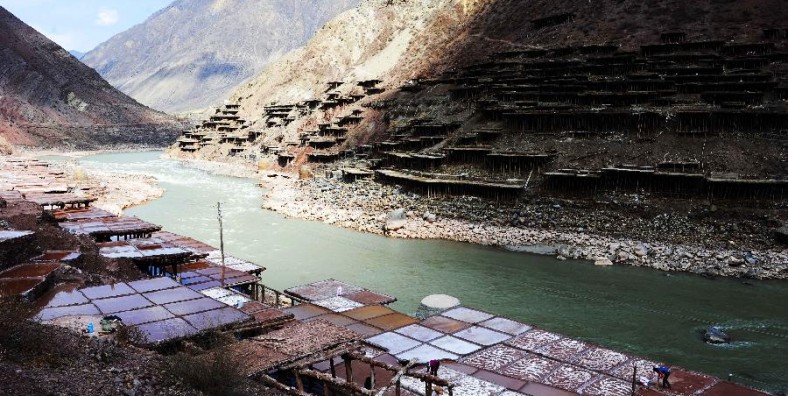
Yanjing Ancient Salt Fields in Markam County, Chamdo
Chinese Name:芒康县盐井盐田
English Name: Yanjing Ancient Salt Fields in Markam County, Chamdo
Location: Located in Markam County, Chamdo Prefecture, Tibet Autonomous Region
Admission Fee: Free
Opening Hours: All Day
About Yanjing Naxi Ethnic Township
Yanjing Naxi Ethnic Township, Markam County, Chamdo Prefecture, Tibet Autonomous Region, is a mysterious place in Tibet. In history, it was a traffic hub connecting Tibetan Empire and the Kingdom of Nanzhao, as well as the only way where Yunnan tea was transported to Tibet. In ancient times, salt selling was the primary source of income for local villagers. The ancient salt well at Yanjing is the only surviving artificial salt-sunning landscape. Today, the ancient salt manufacturing method, the unique of its kind, is still being practiced here.
About Yanjing Ancient Salt Fields
In 2009, the 1000-year-old salt fields in Naxi were made a cultural relic site protected on the regional level in Tibet. The salt producing technique in Markam has been listed in the second batch of national intangible cultural heritage entities.
The salt production process is quite simple, and can be divided into three steps. First, put the brine into the salt pans and then let it dry, the process of which usually lasts seven to eight days, and after most of evaporation, people can collect the leaving white salt. Usually, the upper layer of the salt is better than the lower layer.
Yanjing salt pans are the only surviving salt-sunning landscape along the Ancient Tea Horse Road. Every morning, women with buckets on their back and burdens on their shoulders come to brine well near the river. After filling their containers with brine, they climb to the mountain and pour brine into salt pans. On their faces are simple but bright smiles. Of a mysterious beauty, salt pans are as smooth as a mirror.
The History and Development of the Salt Production
Salt production dates back to 1,300 years ago in Naxi, an ancient town in Markam County of the Changdu Region in the Tibet Autonomous Region. At present, there are more than 3,000 salt fields in the town, and over 300 families are engaged in salt production. Villagers use the traditional way of producing salt by hand that has been passed down from generation to generation.
Salt mining has always been a main industry in Yanjing. There are no written records as to when salt mining and trading began there, but the famous Tibetan epic King Gesar makes mention of wars in the area arising from salt resource disputes. It was the town’s long hours of sunshine and rich wind resources that engendered the Yanjing natural wind drying method of salt collection. Farmers first fetched water from the salt wells by the Lancang River, and transported it to their homes in wooden barrels where it was emptied into the saltwater ponds in their courtyards. After letting the brine concentrate, it would then be poured into a salt field where the water evaporated in the hot sun, leaving the salt residue.
About the White Salt
White salt is of the highest quality and is used as a food ingredient, while the deep red salt produced this way is used to boil tea or feed livestock. In years past Yanjing residents would take salt to cities in Yunnan and Sichuan and barter it for production tools and daily necessities.
Attraction Transportation
The Sichuan-Tibet National Highway 318 and Yunnan-Tibet National Highway 214 converge in Mangkam County, and there are many stops on long-distance coach routes at both Mangkam and Yanjing. Transportation to the area is convenient but it’s a long journey, and a bumpy road. Hitchhiking is common in Tibet, but at a negotiated price. It is possible, but rare, to rent a car for around RMB 2.5 to 5 per km. There are about two flights to Bangda from Chengdu and Lhasa every week, depending on the (changeable) weather.
Attraction Travel Tips
- Traveling Hours: one day
- Traveling Seasons: May to October.
- High Altitude Sickness Avoiding: Better take some medicines for relief and keep warm all the time.
- As there is a large temperature gap between daytime and night, it is highly recommended to take along some pieces of thermal clothing, hat, and gloves and so on.
- Please try your best to respect the religious belief and local customs.

















